Heroes on Display:
Macario Sakay, Lean Alejandro, and the Constantino Murals
The Constantino Murals were created in 2007 in collaboration with TutoK, an artists’ group that, before disbanding, thoroughly explored the language of dissent in the visual realm.
Commissioned by the Constantino Foundation to commemorate the hundredth year anniversary of the execution of Macario Sakay and the 30th year of Lean Alejandro’s assassinatoin, the Constantino Foundation told TutoK they had all the leeway to create the painting but they also had to keep to two rules.
- Avoid visual hagiography-as-usual: Although commissioning the mural was meant to celebrate the lives of two heroic Filipinos, the painting should not portray Sakay and Lean as figures that tower above all others. The artists were asked to avoid painting Sakay and Alejandro the way heroes have been traditionally portrayed in the country, always as someone bigger, braver, smarter, more handsome, more beautiful, more skilled, more intelligent, more courageous, and more daring than everyone else—heroes who were more of everything young people could never measure up to. This is a tragedy the mural must avoid, Foundation representatives told TutoK artists, because the nation’s heroes are ordinary human beings—common Filipinos capable of feeling love, fear, anger, grief, joy and self-doubt just like young people today. But when the country called on its daughters and sons to rise up and overthrow tyranny, many like Sakay and Lean rose up to be counted, to act, and to lead.In other words, the artists were asked to paint the heroes not as extraordinary beings towering above their people but as ordinary Filipinos advancing uncommon deeds in pursuit of national freedom and social liberation.
- Create works that are subversive rather than mere displays of militancy. Create paintings that provoke debate and reflection and which do not end conversations. Paint murals that stay under the skin instead of concluding the dialogue between artist and viewer. Communicate the stutter of history rather than the exclamation points of battles and conflict.
Painting the murals was not easy in the beginning. But because the artists were provided several workshops with historians, including sessions with Lidy Nacpil, much loved activist and campaigner who is also the widow of Lean, TutoK delivered.
Just as importantly, the foundation also fulfilled its promise to the artists, who were told very early that because the murals they were commissioned to create would be centered on two Filipinos who remain shunned by the establishment, the paintings would be displayed in government facilities.
Sakay was, after all, a Katipunan original who sustained the Revolution to overthrow Spain by leading the armed struggle against U.S. annexation of the Philippines. Alejandro was a nationalist who was branded a communist by the Marcos dictatorship he helped bring down. Hanged by U.S. imperial authorities, Sakay was a victim of despicable duplicity. Alejandro was gunned down by still unnamed assassins during the first year of Cory Aquino’s government.
For ten years the Constantino murals were on public display, one at the main lobby of the Ospital ng Makati in Pembo, a government medical facility, and the other at the main staircase wall of the old city hall of San Juan City (since demolished).
After a decade, the Constantino Murals were displayed at the Atelyer Gallery of the Bulwagan ng Dangal of the University of the Philippines Diliman from 14 October 2017 to 24 March 2018. Titled “Hidden in Plain Sight: A Celebration of Heroism,” and consistent with the project’s original premise—to counteract dforgetting—the choice of Bulwagan ng Dangal as exhibit location spoke of Sakay’s true stature and his sacrifice: the exhibit is right below the U.P. Library. Even when he joined the underground, Lean would daydream of spending his remaining days there as he burrowed through the school’s archives.
The Constantino Murals were moved in 2019 to the Linangan Gallery of the Constantino Foundation where they are now on permanent display. An initiative of Constantino Foundation president, the late RC Constantino, the gallery was built to house the murals as well as to commemorate the centennial of the birth of Renato Constantino, who with Letizia Roxas Constantino established the Foundation for Nationalist Studies, renamed the Constantino Foundation in 1999.
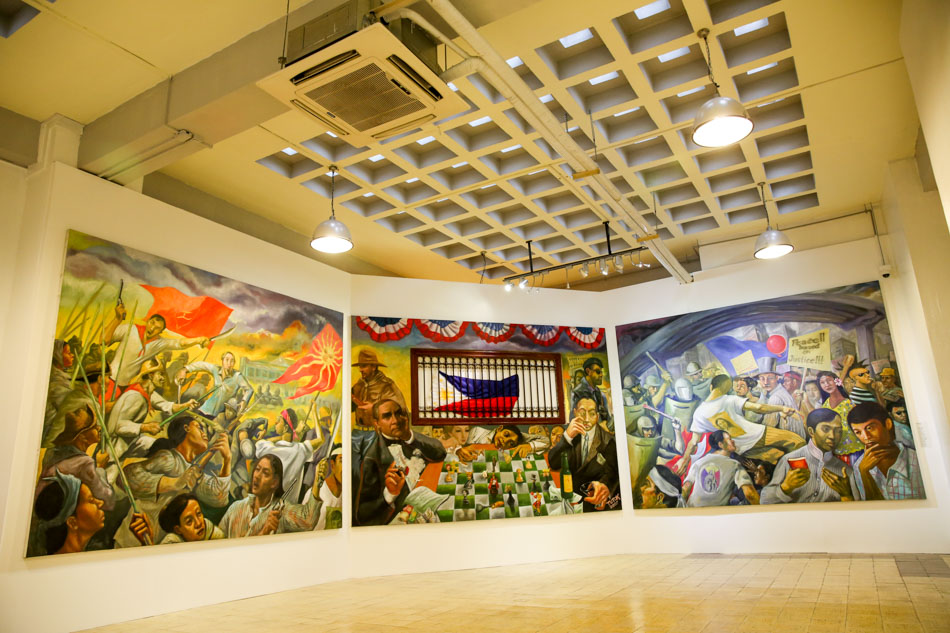
The Murals are on view at the Bulwagan ng Dangal University of the Philippines (UP) in Quezon City. October 14, 2017. Jonathan Cellona, ABS-CBN News
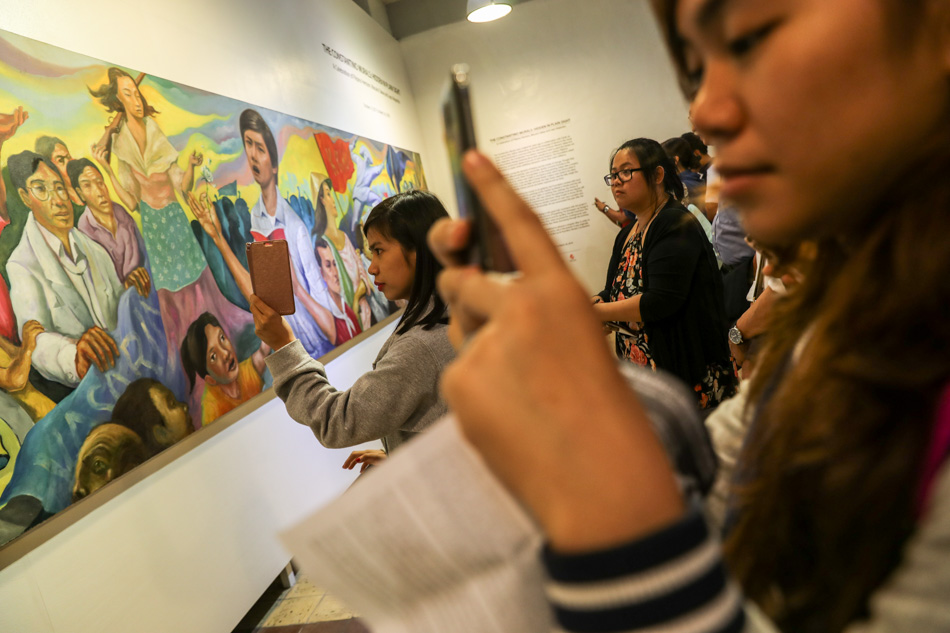
Visitors take pictures of the murals at the Bulwagan ng Dangal University of the Philippines (UP) in Quezon City. October 14, 2017. Jonathan Cellona, ABS-CBN News
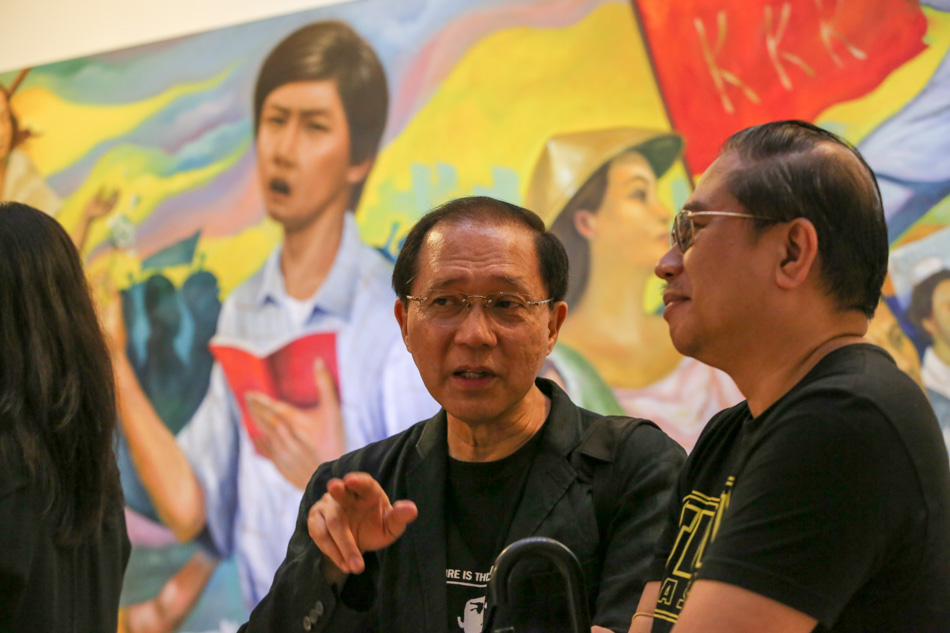
Alejandro’s at the Bulwagan ng Dangal University of the Philippines (UP) in Quezon City. October 14, 2017. Jonathan Cellona, ABS-CBN News
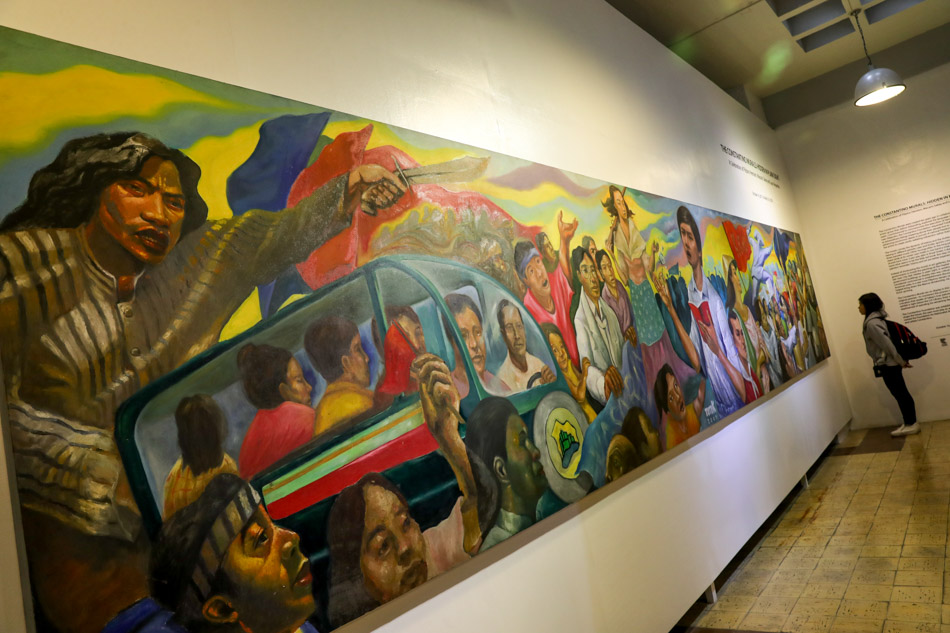
A visitor looks at the long panel at the Bulwagan ng Dangal University of the Philippines (UP) in Quezon City. October 14, 2017. Jonathan Cellona, ABS-CBN News
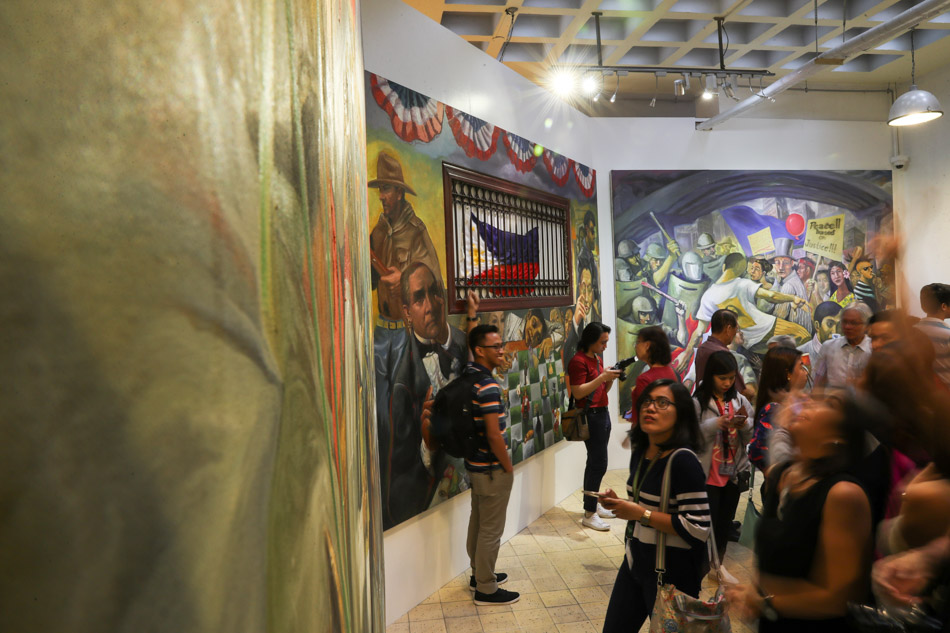
Visitors look at the three panel mural at the Bulwagan ng Dangal University of the Philippines (UP) in Quezon City. October 14, 2017. Jonathan Cellona, ABS-CBN News

